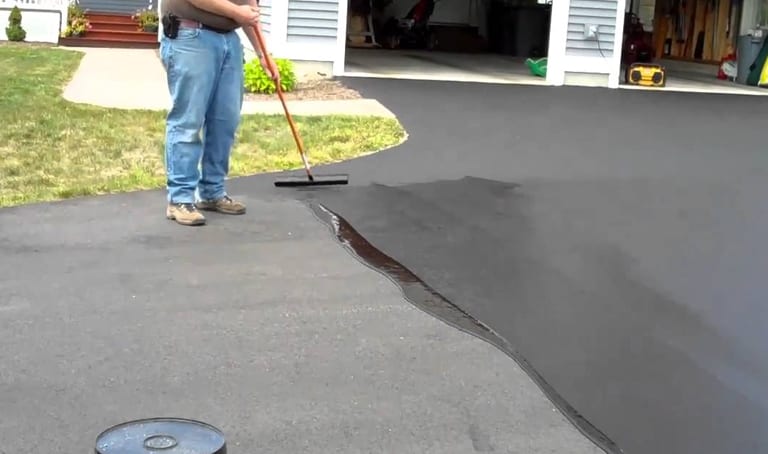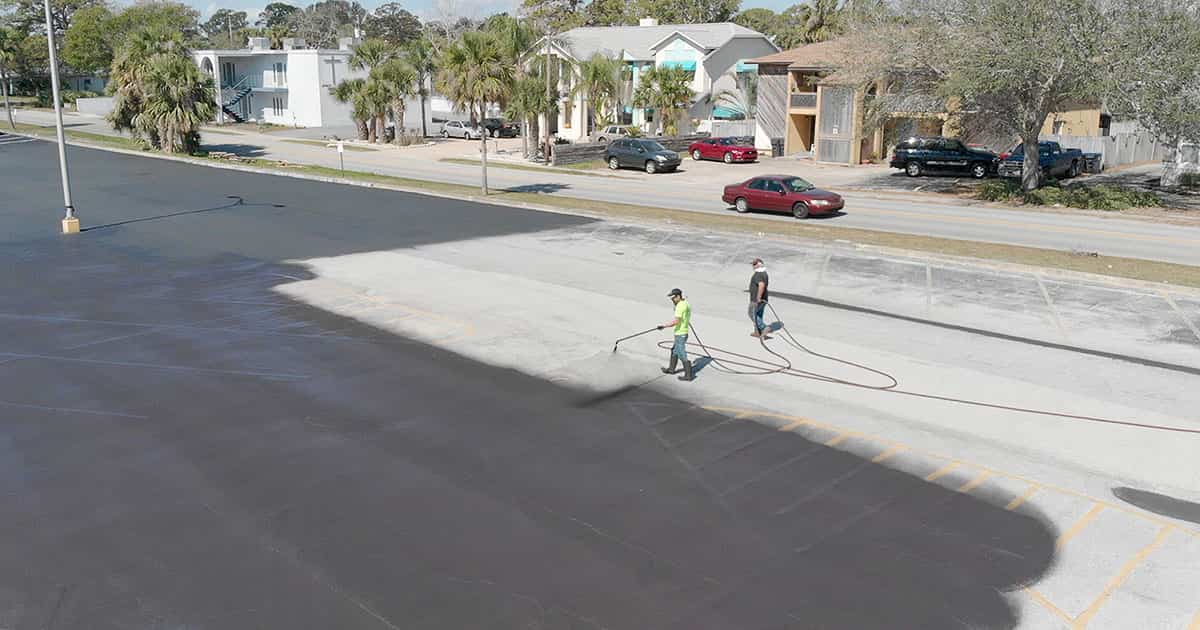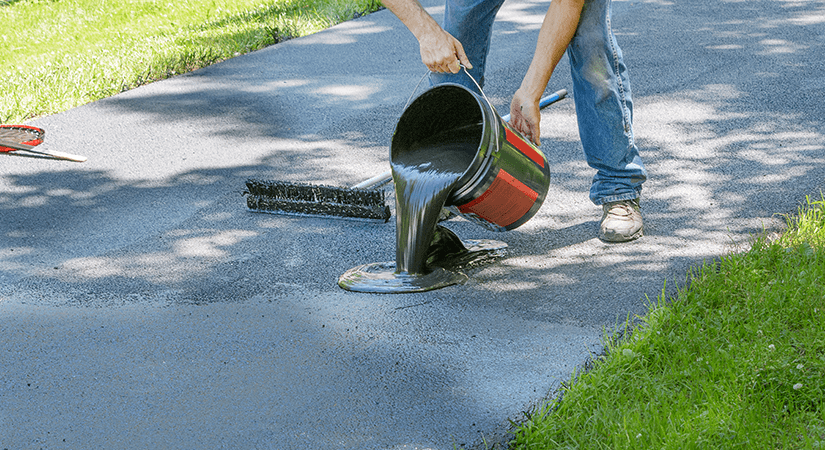Maximize Durability: Warm Mix Asphalt Sealing for Angled Parking Frameworks
Maximize Durability: Warm Mix Asphalt Sealing for Angled Parking Frameworks
Blog Article
Hot Mix Asphalt: A Sustainable Option for Pavement
Warm Mix Asphalt (HMA) has actually arised as a leading lasting choice for pavement services, providing a myriad of ecological benefits and innovative technologies. Its capability to reduce and recycle products energy intake presents an engaging case for its fostering in roadway building projects. The lasting performance and sturdiness of HMA make it a recommended option for facilities advancement. As the need for green building practices expands, discovering the subtleties of HMA's sustainability can give beneficial insights into the future of pavement solutions.
Environmental Benefits of Warm Mix Asphalt

In Addition, Hot Mix Asphalt helps to mitigate urban warm island effects. Its dark color soaks up sunshine, lowering the quantity of warmth reflected back into the ambience compared to lighter-colored pavements. This can decrease ambient temperatures in city locations, lowering the need for air conditioning and ultimately reducing power consumption.
In enhancement, Warm Mix Asphalt contributes to enhanced stormwater monitoring. Its permeable nature allows water to reenergize and infiltrate the sidewalk groundwater materials, minimizing drainage and the risk of flooding. These ecological advantages make Hot Mix Asphalt a sustainable choice for paving highways and roads.
Power Performance in HMA Manufacturing
Is energy effectiveness a critical element in the manufacturing of Hot Mix Asphalt (HMA)? Energy plays a significant role in the production of HMA, influencing both expense and ecological sustainability. One essential facet of power effectiveness in HMA production is the use of cozy mix asphalt (WMA) innovations.
Furthermore, improvements in plant technologies have actually resulted in more energy-efficient HMA manufacturing processes. Modern plants are created with features like recycled asphalt sidewalk (RAP) processing capabilities, efficient heater systems, and enhanced insulation, all contributing to energy cost savings. By maximizing energy usage in HMA manufacturing, the sector can lower its carbon footprint while keeping high-grade sidewalk materials. Power performance is, for that reason, a critical consideration in ensuring the sustainability of Hot Mix Asphalt production.
Recyclability of Hot Mix Asphalt
The recyclability of Warm Mix Asphalt (HMA) is a critical element of its sustainability and long-lasting environmental impact. HMA is one of the most recycled materials in the USA, with over 100 million bunches of redeemed asphalt pavement (RAP) being recycled every year in brand-new sidewalk building. Reusing HMA offers several environmental advantages, such as lowering the requirement for virgin materials, reducing energy consumption throughout production, and decreasing the quantity of waste sent out to landfills.
The procedure of recycling HMA includes milling the existing pavement, crushing it into smaller sized pieces, and mixing it with new aggregate and asphalt binder to create a recycled mix. This recycled mix can often do along with or also far better than traditional HMA, while needing less raw materials and creating reduced greenhouse gas discharges. By including RAP into new pavement tasks, roadway companies can save natural deposits, reduce expenses, and lessen the environmental impact of road building and upkeep activities. On the whole, the recyclability of HMA plays a substantial function in advertising lasting practices within the sidewalk industry.

Long-Term Performance of HMA
Asphalt sidewalks show sturdiness and strength over a prolonged period, showing the long-lasting performance of Warm Mix Asphalt (HMA) The longevity of HMA can be connected to its capability to hold up against rush hour tons, harsh climate condition, and the effects of go to website aging. Researches have actually shown that well-designed and properly constructed HMA pavements can last for 20 years or more with routine maintenance. The secret to taking full advantage of the lasting efficiency of HMA hinges on utilizing high-quality products, following best methods in construction, and implementing efficient upkeep methods. Correct drainage, regular evaluations, and prompt repair services are necessary for maintaining the structural honesty of HMA pavements with time. In addition, advancements in HMA technology, such as making use of polymer-modified binders and cozy mix asphalt, have additionally improved the longevity and longevity of HMA pavements. By prioritizing high quality about his construction and maintenance methods, HMA remains to confirm itself as a sustainable and affordable remedy for durable pavement framework.

HMA: Durability and Sustainability
Showing both longevity and sustainability, Hot Mix Asphalt (HMA) has actually ended up being a keystone in the building of long-lasting pavement facilities - hot mix asphalt. HMA's resilience comes from its ability to stand up to hefty loads, extreme weather condition problems, and high traffic volumes, making it a trustworthy choice for roads, freeways, and airport terminal paths. The make-up of HMA, which normally consists of accumulations, binder, and filler, plays an important duty in improving its longevity and resistance to tear and use
Additionally, HMA's sustainability depends on its recyclability and energy-efficient manufacturing procedure. The capacity to reuse recovered asphalt pavement (RAP) in new HMA mixes decreases the need for virgin products and lessens the environmental effect of sidewalk construction and maintenance. Additionally, the energy efficiency of generating HMA lies in its lower blending temperature levels contrasted to various other pavement materials, resulting in lowered energy consumption and greenhouse gas exhausts.
Conclusion
In verdict, warm mix asphalt (HMA) provides a lasting solution for pavement with its eco-friendly features. HMA's recyclability, energy effectiveness in production, and long-term toughness make it an eco-friendly choice for road building. By saving natural deposits, reducing waste, and reducing greenhouse gas emissions, HMA plays look at here now an important role in promoting sustainability in facilities growth. Its ability to minimize urban warmth island impacts further emphasizes its value in producing ecologically conscious and resilient pavement systems.
HMA is one of the most recycled products in the United States, with over 100 million bunches of recovered asphalt sidewalk (RAP) being reused annually in new pavement building and construction.The process of reusing HMA involves milling the existing sidewalk, crushing it into smaller items, and mixing it with brand-new aggregate and asphalt binder to produce a recycled mix.Asphalt pavements demonstrate longevity and resilience over an extensive period, mirroring the long-lasting performance of Hot Mix Asphalt (HMA) In addition, innovations in HMA technology, such as the use of polymer-modified binders and cozy mix asphalt, have further improved the sturdiness and longevity of HMA sidewalks. The capacity to reuse reclaimed asphalt sidewalk (RAP) in new HMA mixes decreases the demand for virgin materials and minimizes the ecological impact of pavement building and upkeep.
Report this page